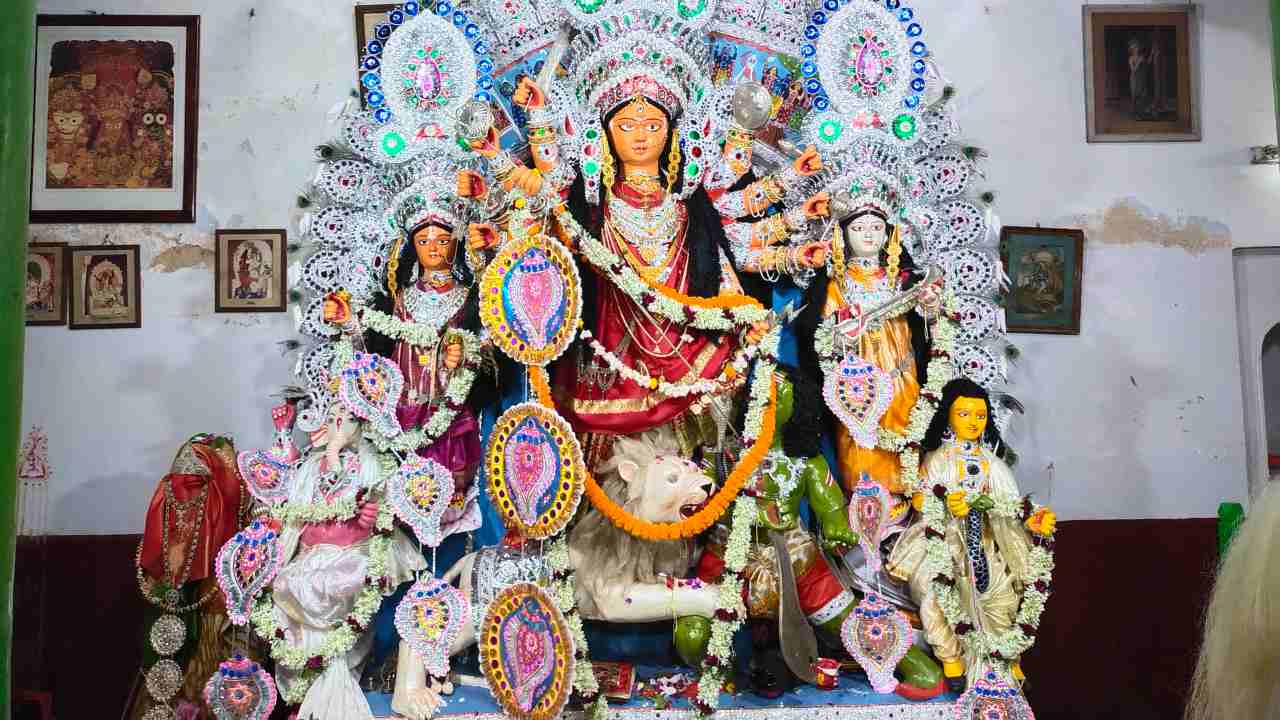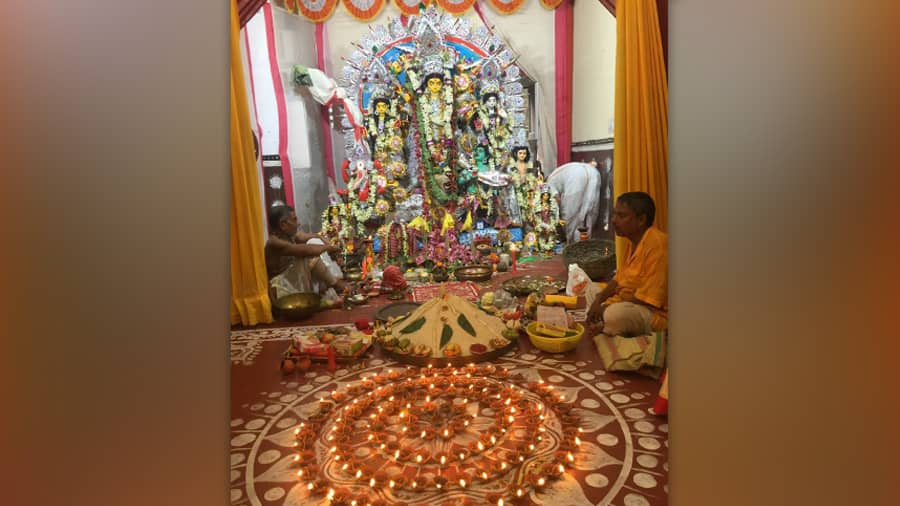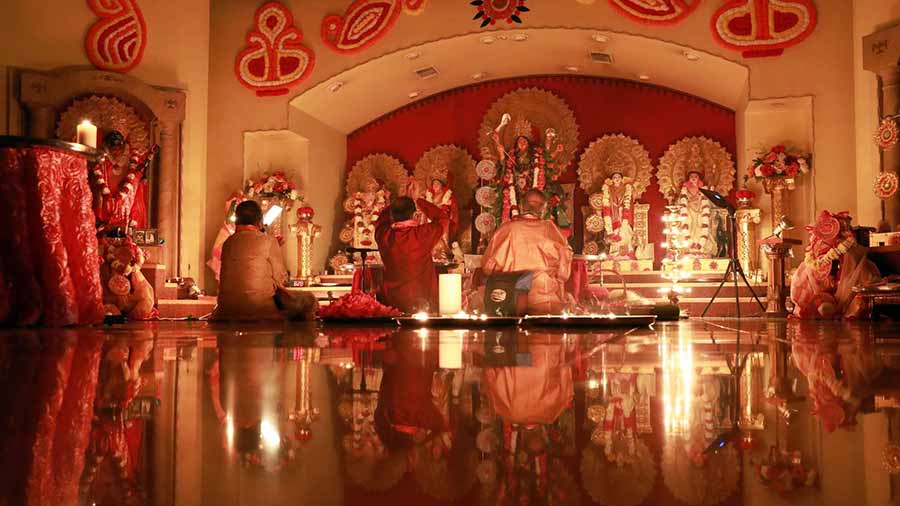Born in Kolkata but growing up at St Paul’s School in the hills of Darjeeling from the age of six meant that Durga Puja was always an annual homecoming for me. For most Bengalis, Puja is about relentless pandal-hopping and even more relentless indulgence in street food. For me, however, Puja holds a different meaning. I spend the festival occupied with the barir puja at my mother’s ancestral home in Howrah.
The puja at Nrisingha Niloy is close to 200 years old and to this day, we follow each and every tradition to the tee. Every year we use the same straw structure and the same family of craftsmen to mould and paint our Maa Durga. Even the dhakis who provide the mesmerising soundtrack (and a dance move or two!) to our puja are always from the same family.
A different connection with the divine
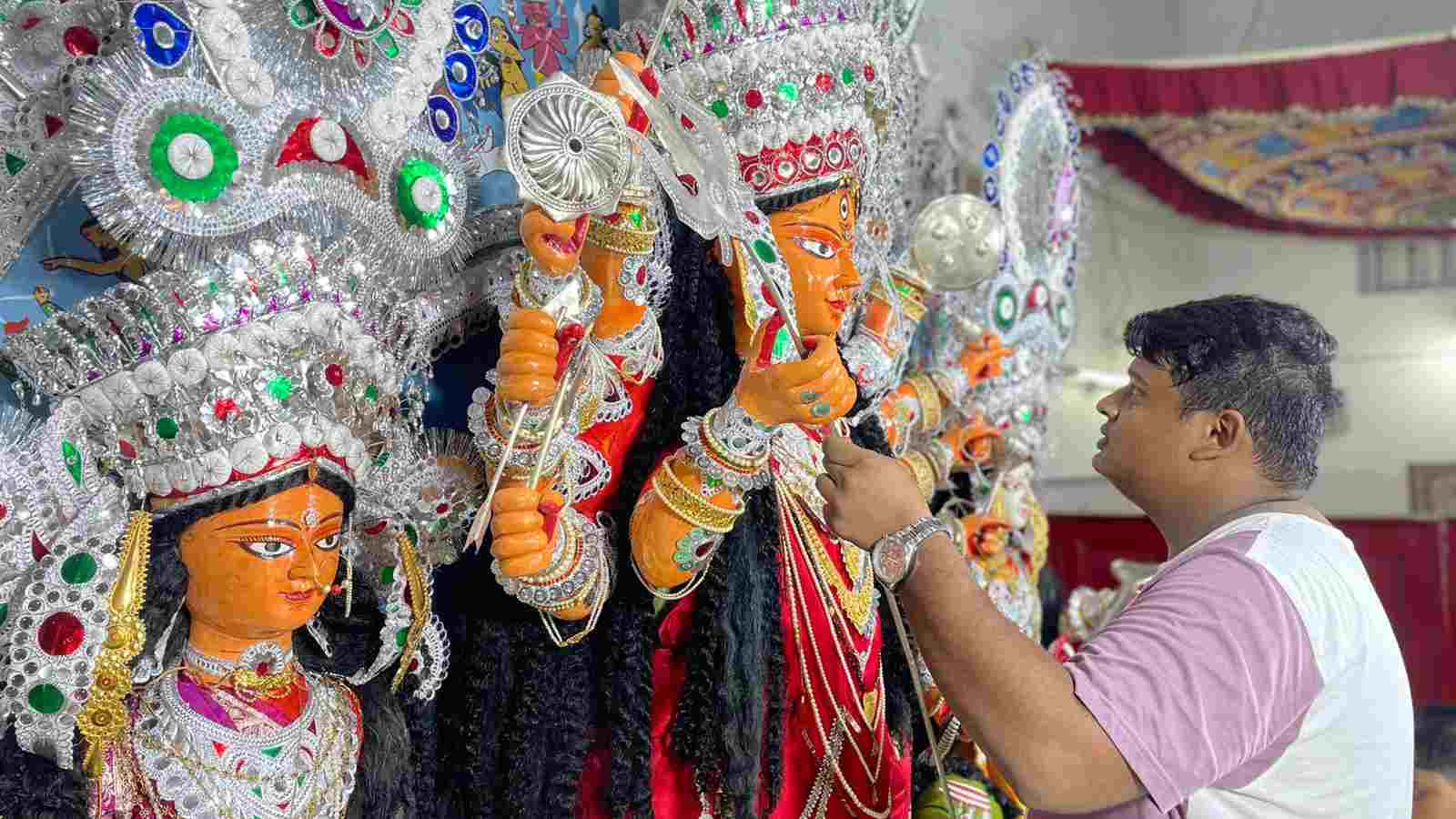
The author helps in decorating Maa Durga with her weapons Srijita Bose
Puja is when our huge extended family comes together, with almost all our relatives across India and the world gathering for celebrations and several rounds of great adda. I have never been religious, but my connection with the divine becomes different during these few days. From helping out in the process of decorating Maa Durga with all her ornaments and weapons on Sashthi to ringing the bell through all the arati sessions to lending a hand during visarjan, getting involved in my barir puja feels wholesome, unlike the community puja experience.
Nrisingha Niloy, the spacious Ramkrishnapur house with two courtyards that hosts the puja, was built in the 1840s and still retains most of its original charm and grandeur. The puja, almost as old as the house, is headed by the eldest son of the family. He becomes the family’s foremost representative during many of the rituals. Our kumari puja, involving the annual worship of a girl less than 12 years old, is one of the permanent rituals.
Listening to the mantras with grandpa
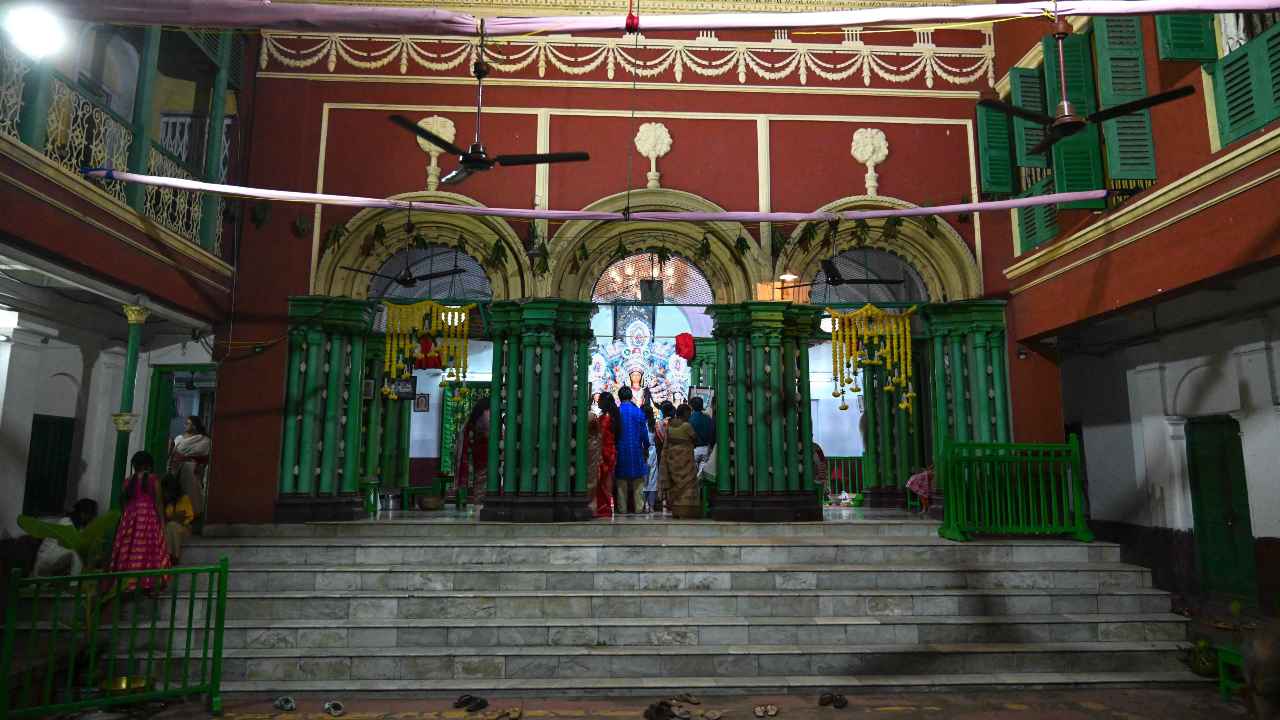
For several years, the author’s grandfather, Partha Sadan Bose, used to oversee the puja Rushabh Shah
For several years, my late grandfather Partha Sadhan Bose would oversee all aspects of the puja. I would sit beside him, listening to the mantras, as my mother explained what the purohit meant. Since my grandfather passed away, my uncle Sourya Sadhan Bose has stepped in, adhering to the traditions just as my grandfather would have done. The Puja menu is still strictly vegetarian from Mahalaya to the dakhinanta puja (involving ceremonial payment to the purohit for his work over nine days) on Navami.
It is impossible to talk about our puja and not highlight the contribution of the women. They are the backbone of the puja. Right from Mahalaya, they start preparing for the various cultural functions and pay attention to the details that eventually lead to the smooth conduct of the puja year on year. The bulk of their work begins on the Panchami evening, with activities like preparing the naru, and stretches until the pratima boron on Dashami. Numerous other tasks, from readying the kumari to assembling and distributing the bhog, are also helmed by women.
Same structure for Durga since the 1840s

The straw structure for the Durga idol was initially found in the house’s corridor, which has gone on to become the ‘thakurdalan’ Rushabh Shah
I feel enthralled when I think of how the puja began. Sometime in the 1840s, Eshan Chandra Bose was returning home from work when he found a straw structure lying on the staircase of what is now our thakur dalan. Ever since, we have used the same straw structure for our pujas. Every Dashami, we walk the 12-foot structure to the Hooghly, where we immerse it in the water to soften and remove the mud and the paint on the idol. Once that is done and Maa Durga recedes into the river, we bring back the structure and preserve it for next autumn.
I remember the first time I went to the river on a Dashami, I clung to my grandfather. As a kid, I was allowed to remove the mud off Mahisasur first and then from Kartik and Saraswati. The feeling I had defines Durga Puja for me even today. As much as I miss my grandfather, it is this sacred essence of Puja that brings me back every year, to relive age-old traditions and make new memories.
